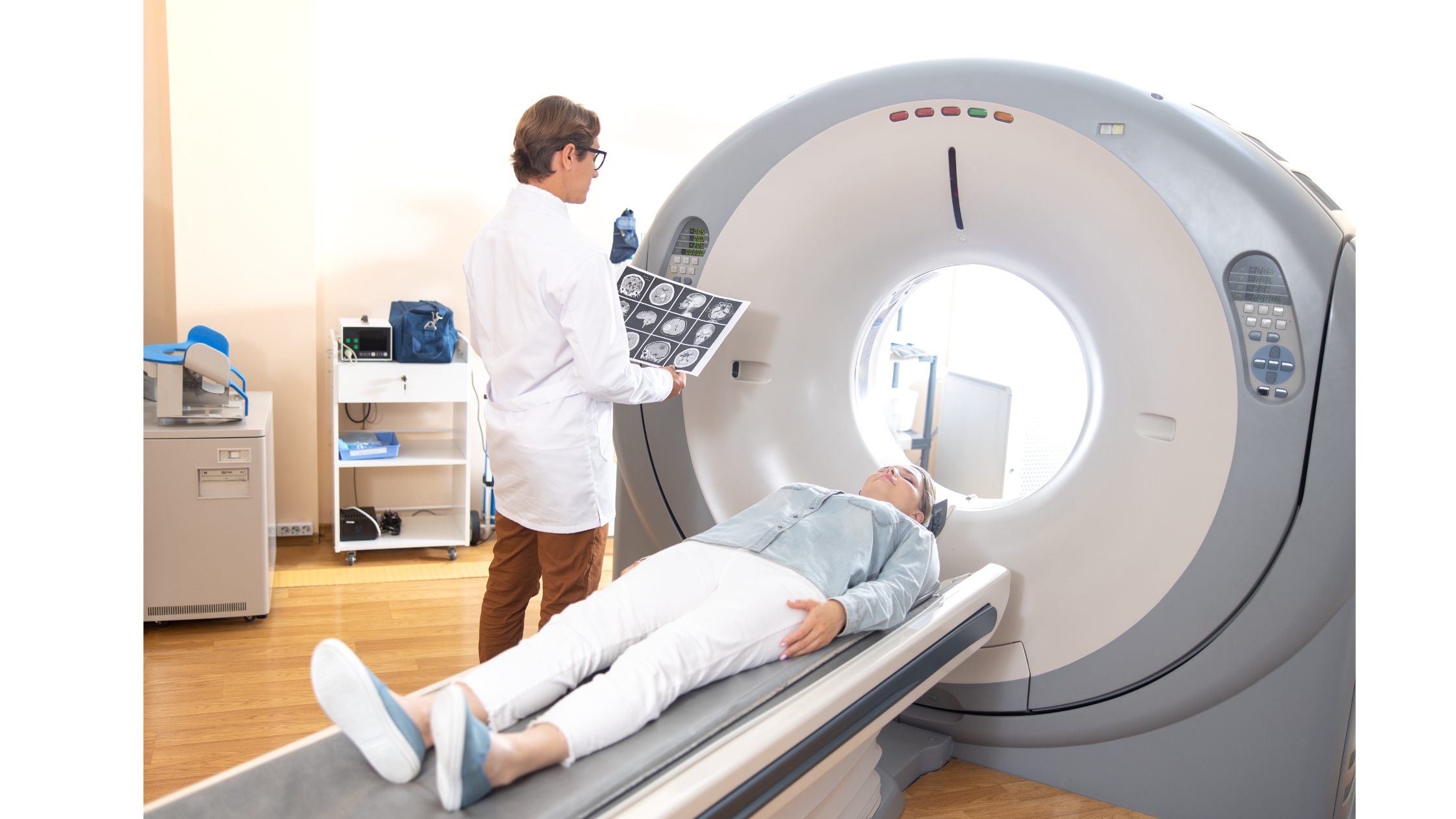Computed tomography (CT) is a medical imaging technique that uses X-rays to produce detailed cross-sectional images of the body. Here’s how it works:
The patient lies on a table that slides into a large, doughnut-shaped machine called a CT scanner.
The CT scanner produces a series of X-ray beams that pass through the body at different angles.
As the X-ray beams pass through the body, they are absorbed to varying degrees by different tissues. For example, bone absorbs X-rays more readily than soft tissue, so it appears white on a CT image.


Sensors on the other side of the body detect the X-rays that pass through the body and send the information to a computer.
The computer processes the data and uses it to create detailed images of the inside of the body. These images can be viewed on a monitor and are often used to diagnose medical conditions, guide medical procedures, and monitor treatment progress.
CT scans expose the patient to a small amount of radiation, but the risks are generally low and the benefits of the scan often outweigh the risks. CT scans can be used to examine almost any part of the body and are often faster and more convenient than other imaging techniques, such as MRI.